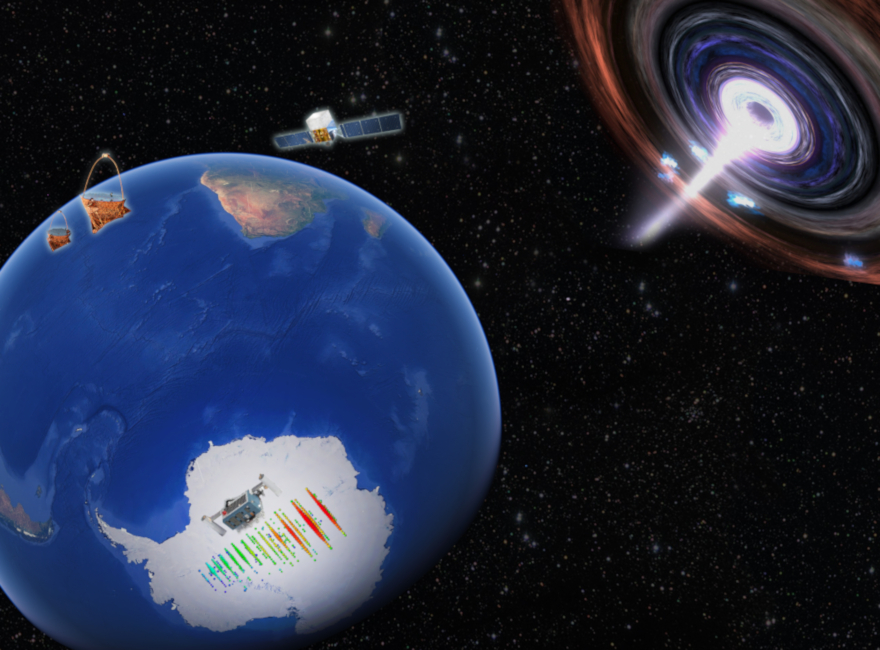
 Credit: IceCube Collaboration/Google Earth: PGC/NASA U.S. Geological Survy Data SIO,NOAA, U.S. Navy, NGA, GEBCO Landsat/Copernicus
Credit: IceCube Collaboration/Google Earth: PGC/NASA U.S. Geological Survy Data SIO,NOAA, U.S. Navy, NGA, GEBCO Landsat/Copernicus
Ghost Rider in the Sky
Cosmic rays are mysterious broken bits of atoms generated by powerful, natural particle accelerators. We don't completely know what breaks these atoms and what accelerates them. This is because cosmic rays are electrically charged, and because the Milky Way is magnetized. As cosmic rays speed through the Galaxy, their paths are altered by the Milky Way's tangled magnetic field, so by the time they arrive at earth it's impossible to determine from where in outer space they came. Through painstaking deduction, we have identified some sources of cosmic rays: magnetically-driven explosions from the Sun, supernovae, and now the titanic collisions of winds in massive binaries all produce cosmic rays. The sources of cosmic rays also produce high energy gamma rays, and should also produce neutrinos. Neutrinos are sometimes called "ghost particles": they are among the lowest mass fundamental particles we know, they fly through space at nearly the speed of light, and they are extremely difficult to detect. Neutrinos, like photons, are electrically neutral, so that a neutrino produced by cosmic-ray acceleration points directly back to its source. Now, for the very first time ever, on September 22, 2017, the IceCube neutrino observatory spotted a neutrino associated with cosmic ray acceleration beyond the Milky Way. IceCube uses a cubic kilometer of Antarctic ice as a massive neutrino detector. The neutrino detected by IceCube points back to a region of the sky containing a blazar, a giant elliptical galaxy housing a supermassive black hole that generates a powerful, narrow particle beam produced as the black hole gobbles tremendous amounts of galactic matter. Blazars are oriented so that the particle beam is directly pointed at earth (but they are so far away that they pose no danger to us). At nearly the same time as the neutrino detection by IceCube, gamma-ray emission was detected from this blazar by NASA's Fermi Gamma Ray Space Telescope, and very high energy gamma radiation was also detected from this source by the MAGIC observatory on the ground. The image above is an illustration of the acceleration of charged particles in the blazar jet, producing neutrinos and gamma rays which hit the earth. These observations for the first time directly connect the production of high-energy radiation and the production of neutrinos in an active galaxy. Like the observation of gravitational waves and electromagnetic radiation from colliding neutron stars, this discovery shows the increasing importance of multi-messenger astronomy for exploring the Universe.
Published: July 16, 2018
<
HEA Dictionary ● Archive
● Search HEAPOW
● Other Languages
● HEAPOW on Facebook
● Download all Images
● Education ● HEAD
>

Each week the HEASARC
brings you new, exciting and beautiful images from X-ray and Gamma ray
astronomy. Check back each week and be sure to check out the HEAPOW archive!
Page Author: Dr. Michael F. Corcoran
Last modified Monday, 26-Feb-2024 17:10:00 EST


